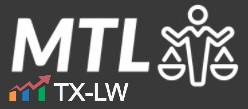If you do not owe any tax for a year and you are certain of it, can you just file an income tax return that reports all zeros for income and lists the amount you paid to the IRS that you want refunded? I’ll refer to this as a “zero income-tax return.”
This is a valid question, as many taxpayers do not owe or have to pay income taxes. Our income tax burden is primarily paid by those in the middle class and upper class. The majority of taxpayers may still file tax returns to obtain refunds of amounts they paid in to the IRS by wage withholdings or even refundable tax credits, such as the child tax credits. In these cases, it might make sense to file a zero income-tax return and just list the amount of tax paid that is to be refunded. This would be consistent with the push for the IRS to simplify the tax reporting process for taxpayers. This would even make the Trump-era postcard tax return idea possible for most Americans. And some states, such as Texas with its franchise tax, have a similar concept. Texas calls it a no-tax due form.
But does Federal law allow for this? Will the IRS accept a zero-income tax return? The recent Varela v. Commissioner, T.C. Memo. 2024-85, provides an opportunity to consider this question and explore the potential consequences of filing a zero-income tax return when no tax is due.
Contents
Facts & Procedural History
The taxpayer filed a Form 1040EZ, Income Tax Return for Single and Joint Filers With No Dependents, for the 2017 tax year. The return reported zero wages and zero taxable income. It listed the standard deduction and sought a refund of $1,373, comprising federal income tax, Social Security tax, and Medicare tax withholdings that had been paid to the IRS.
Attached to the Form 1040EZ were four Forms 4852, Substitute for Form W-2, each reporting zero wages or income.
Third parties had filed information reporting forms with the IRS indicating that the taxpayer had received $11,311 in wages and $1,436 in cancellation of indebtedness income. These amounts appear to be about the same amount as the allowable standard deduction and personal exemption for 2017.
The IRS’s automated underreported program no doubt detected the discrepancy and sent the taxpayer a CP2000 notice.
The matter ended up in the U.S. Tax Court and the parties settled the case agreeing that no tax was due. The IRS assessed a $5,000 penalty under Section 6702(a) for filing a frivolous tax return for the zero income-tax return the taxpayer had filed. The taxpayer disputed the penalty, and the dispute ended up back before the U.S. Tax Court.
Duty to File Returns & IRS Processing
To understand whether one can simply file a zero income-tax return, we have to first consider the rules that require tax returns to be filed and that require the IRS to process them.
Section 6011 generally requires any person liable for any tax to make a return according to the forms and regulations prescribed by the Secretary of the Treasury. There are exceptions and other forms can be used, even though the IRS does not like it. Section 6001 then imposes an obligation for taxpayers to make returns and keep and provide books and records to the IRS on request.
Complementing this duty is the IRS’s obligation to process tax returns. Section 6201(a) requires the IRS to assess all taxes imposed by the tax code. This includes the duty to process and record the tax returns filed by taxpayers. The IRS is not, however, required to process a document that is filed that is not a tax return.
What Counts as a Tax Return?
The question of what constitutes a tax return has been the subject of numerous court cases. Beard v. Commissioner, 82 T.C. 766 (1984), aff’d, 793 F.2d 139 (6th Cir. 1986) is the leading case for this.
In Beard, the tax court established a four-part test for determining whether a document qualifies as a valid return. Under the “Beard test” a document is a tax return if:
- The document purports to be a return
- It is executed under penalties of perjury
- It contains sufficient data to allow calculation of tax
- It represents an honest and reasonable attempt to satisfy the requirements of the tax law
This “Beard test” has been widely adopted by federal courts.
Under the Beard test, a tax return that reports zero income may fail the third and fourth prongs of this test, especially if the IRS has information indicating that the taxpayer had taxable income.
Counterintuitively, it is often the taxpayer who is asserting that a document that was filed is not a tax return. This can be an “out” for taxpayers who file frivolous tax returns when the IRS imposes frivolous tax return penalties or even a fraudulent tax return, for example. The IRS asserted the frivolous return penalty in the present case. Reading the court opinion, it appears that the taxpayer did not raise the no-return argument as a defense.
The Frivolous Return Penalty
As this case shows, the IRS may be inclined to impose a frivolous return penalty if a taxpayer files a zero income-tax return. Section 6702(a) authorizes the IRS to impose this penalty and explains that the penalty is $5,000 for each frivolous tax return that is filed.
For this penalty to apply, the tax return has to be “frivolous.” Naturally, taxpayers and the IRS often do not agree as to whether documents are “frivolous.” That was the dispute in this case.
The courts have generally said that a tax return is considered “frivolous” if:
- It does not contain information on which the substantial correctness of the self-assessment may be judged, or contains information that on its face indicates the self-assessment is substantially incorrect; and
- The position taken is either based on a position the IRS has identified as frivolous or reflects a desire to delay or impede the administration of Federal tax laws.
In the present case, the tax court found that filing a zero-income return when third-party information indicated substantial income met these criteria.
The tax court did not accept the taxpayer’s argument that the penalty cannot be imposed when no tax was due. The tax court emphasized that a taxpayer can be penalized for filing a frivolous return even if they ultimately owe no tax, as the penalty is based on the nature of the return itself, not the final tax liability.
The Section 6673 Penalty
In addition to the frivolous return penalty, for matters that are before the tax court, the IRS can also ask the court to impose a penalty as a sanction.
Section 6673 authorizes the tax court to impose a penalty of up to $25,000 when a taxpayer institutes or maintains proceedings primarily for delay or takes frivolous or groundless positions. This is separate from the frivolous filing penalty.
In this case, the IRS asked the tax court to impose a Section 6673 penalty for the zero income-tax return. The tax court opted not to impose the penalty given that the court had not previously warned the taxpayer not to make frivolous filings–i.e., the taxpayer did not file the tax return as part of the litigation, so the tax court had not admonished him to not make a similar filing. That is what this penalty is for–it is not for pre-litigation tax return filings–even zero income-tax return filings.
Even then, while the tax court declined to impose the penalty, it warned the taxpayer that such penalties could be imposed in future cases if he continued to pursue similar arguments. This highlights the potential escalating consequences for taxpayers who repeatedly file zero-income returns during the pending litigation or make other frivolous tax arguments when before the tax court.
Takeaway
This case shows why taxpayers should still take the time to complete their tax returns when no tax is due. Simply reporting no income and listing the amount of the refund, is convenient for taxpayers, it is not a process that is accepted by the IRS. Those who do this may find themselves in a situation like the taxpayer in this case, having to spend a considerable amount of time and resources responding to and working with the IRS and then having to defend against a frivolous return penalty.
In 40 minutes, we'll teach you how to survive an IRS audit.
We'll explain how the IRS conducts audits and how to manage and close the audit.


